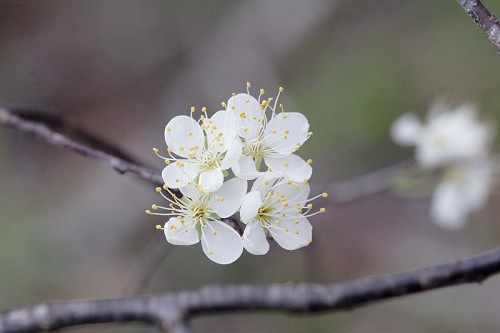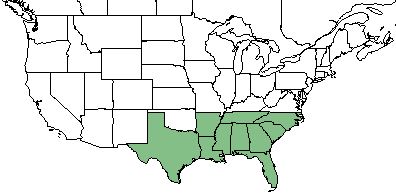Difference between revisions of "Prunus umbellata"
(→Distribution) |
(→Ecology) |
||
| Line 41: | Line 41: | ||
<!--===Fire ecology===--> <!--Fire tolerance, fire dependence, adaptive fire responses--> | <!--===Fire ecology===--> <!--Fire tolerance, fire dependence, adaptive fire responses--> | ||
<!--===Pollination===--> | <!--===Pollination===--> | ||
| − | + | ===Use by animals=== | |
| + | Wildlife, particularly mammals, only use it for a small amount of their diets. <ref name= "USDA"> [https://plants.usda.gov/core/profile?symbol=CEAM USDA Plant Database]</ref> | ||
<!--==Diseases and parasites==--> | <!--==Diseases and parasites==--> | ||
Revision as of 19:48, 24 May 2018
| Prunus umbellata | |
|---|---|

| |
| Photo by John Gwaltney hosted at Southeastern Flora.com | |
| Scientific classification | |
| Kingdom: | Plantae |
| Division: | Magnoliophyta - Flowering plants |
| Class: | Magnoliopsida - Dicots |
| Order: | Rosales |
| Family: | Rosaceae |
| Genus: | Prunus |
| Species: | P. umbellata |
| Binomial name | |
| Prunus umbellata Elliott | |

| |
| Natural range of Prunus umbellata from USDA NRCS Plants Database. | |
Contents
Taxonomic Notes
Synonym: Prunus mitis (Beadle), Prunus injucunda (Small)
Variety: none
Description
P. umbellata is a perennial shrub/tree of the Rosaceae family that is native to North America. [1]
Distribution
P. umbellata is found throughout the southeastern United States; specifically, Florida, Georgia, South Carolina, North Carolina, Tennessee, Alabama, Mississippi, Louisiana, Arkansas, and Texas. [1]
Ecology
Habitat
Habitats for P. umbellata include upland, sandy or rocky forests and woodlands. [2]
Phenology
Flowering occurs typically between January and April, the majority of the budding in March. [3]
Use by animals
Wildlife, particularly mammals, only use it for a small amount of their diets. [1]